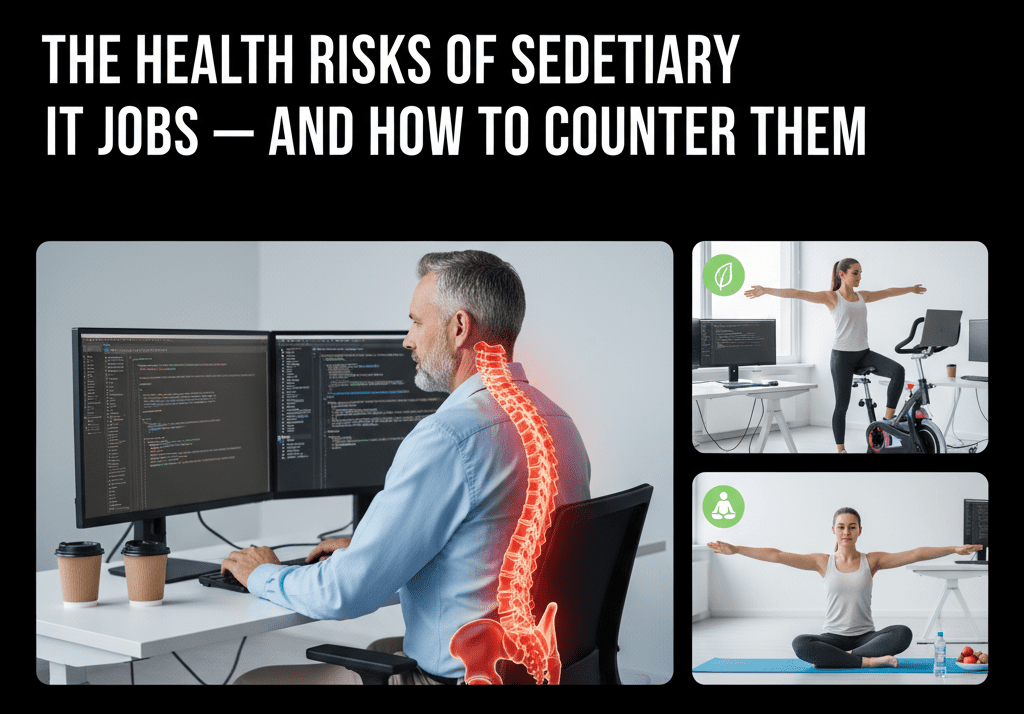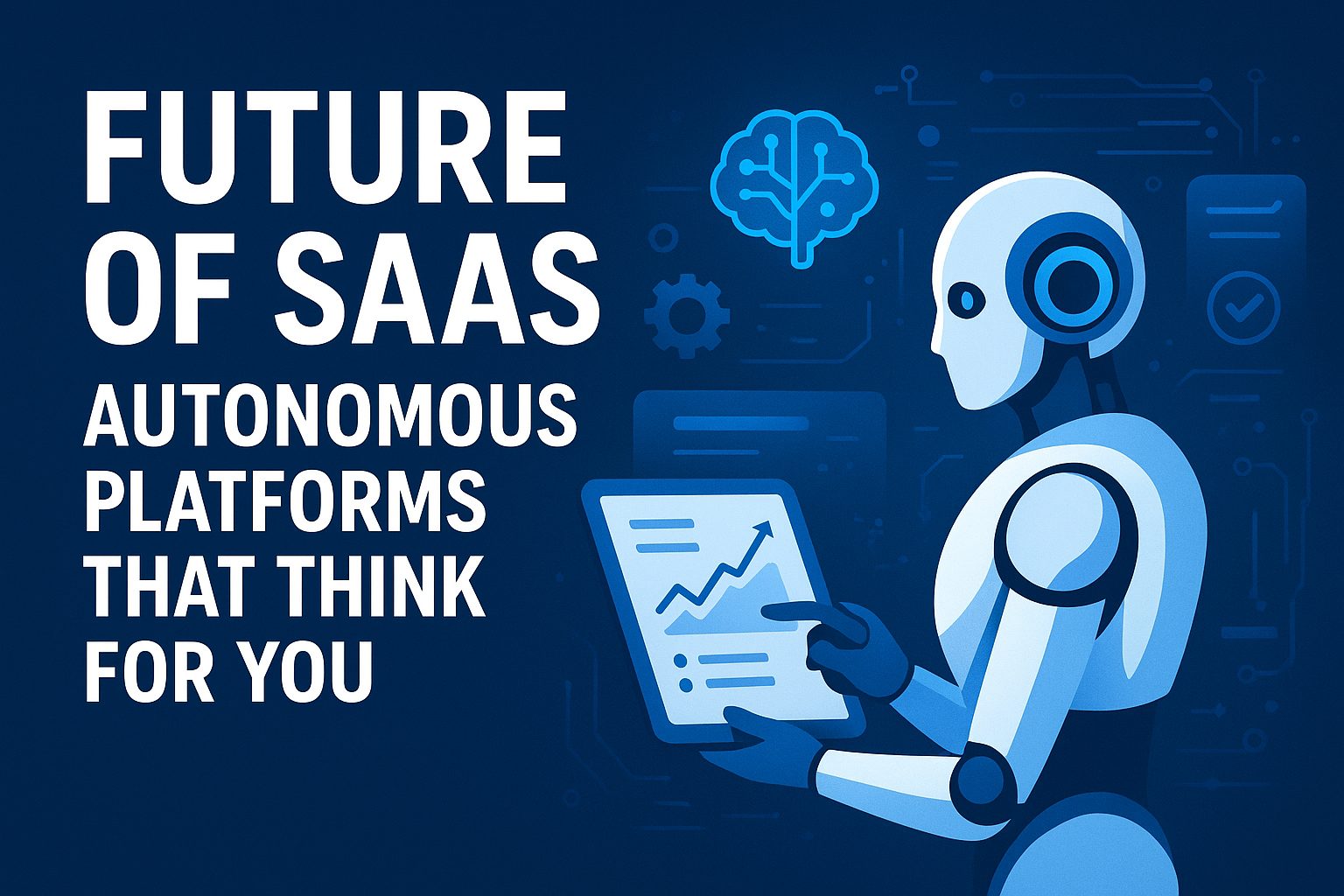In today’s fast-paced digital world, IT professionals are the backbone of modern business operations. From software developers and data analysts to network engineers and project managers, the tech industry runs on long hours of screen time. However, this convenience and connectivity come with a cost — sedentary lifestyles that pose serious health risks over time.
If you spend most of your day sitting in front of a computer, it’s important to understand how this affects your body and what you can do to reverse the damage. Let’s break down the hidden dangers of sedentary IT jobs and the practical ways to counter them.
1. The Hidden Dangers of a Sedentary Work Life
Most IT jobs involve extended sitting — often 8 to 10 hours daily — with little physical activity. According to health experts, prolonged sitting can slow your metabolism, affect posture, and increase the risk of several chronic diseases.
Here are some of the most common risks:
a. Poor Posture and Back Pain
Hours of hunching over a computer can lead to poor posture, spinal misalignment, and chronic lower back pain. Many IT workers experience stiffness in the neck and shoulders — signs of muscle imbalance caused by sitting too long.
b. Increased Risk of Heart Disease
Studies show that sedentary behavior is strongly linked to cardiovascular issues. Sitting for prolonged periods can reduce blood circulation, increase cholesterol levels, and contribute to high blood pressure — all of which heighten the risk of heart disease.
c. Weight Gain and Metabolic Issues
When you sit for long hours, your body burns fewer calories. This slow metabolism can lead to weight gain, insulin resistance, and even type 2 diabetes. In IT jobs where meals are often skipped or replaced with snacks, the problem can worsen quickly.
d. Eye Strain and Fatigue
Continuous screen exposure causes digital eye strain — dryness, blurred vision, and headaches. The lack of movement also reduces oxygen flow to the brain, leading to fatigue and decreased productivity.
e. Mental Health Decline
Surprisingly, sedentary behavior doesn’t just affect the body. It also impacts the mind. Reduced physical activity is linked to stress, anxiety, and depression, especially in high-pressure IT roles.
2. How to Counter the Effects of a Sedentary Job
The good news? You don’t need to quit your IT job to stay healthy. Small, consistent lifestyle changes can make a big difference. Here’s how you can fight back against a sedentary routine:
a. Incorporate the 30-3 Rule
Follow the “30-3 Rule” — for every 30 minutes of sitting, stand up or move around for at least 3 minutes. It can be as simple as stretching, refilling your water, or walking around your desk. These mini-breaks help improve blood circulation and reduce stiffness.
b. Create an Ergonomic Workspace
Invest in an ergonomic chair and adjustable desk to support your posture. Keep your monitor at eye level and your feet flat on the floor. Ergonomics not only prevent physical strain but also increase your overall comfort and focus.
c. Try Standing or Walking Meetings
Whenever possible, switch to standing meetings or take phone calls while walking. This habit can significantly increase your daily activity level and give your mind a refreshing change of environment.
d. Exercise Regularly
Even 20–30 minutes of moderate exercise daily — like brisk walking, cycling, or yoga — can offset many of the negative effects of sitting. You don’t need a gym; home workouts or simple body-weight exercises are enough to keep your body active.
e. Stretch During Breaks
Simple desk stretches can do wonders. Rotate your neck, stretch your arms, twist your torso, or stand up to touch your toes. These micro-exercises keep muscles flexible and reduce fatigue.
f. Eat Smart and Stay Hydrated
Many IT professionals rely on caffeine and fast food to get through the day. Instead, focus on balanced meals with fruits, vegetables, and lean proteins. Also, keep a water bottle nearby to stay hydrated and energized.
g. Practice Eye Care
Follow the 20-20-20 rule: every 20 minutes, look at something 20 feet away for 20 seconds. This helps reduce digital eye strain and refreshes your vision.
h. Prioritize Mental Health
Take short mindfulness breaks — deep breathing, meditation, or even a walk outdoors. Reducing stress helps maintain focus and creativity, especially in demanding tech roles.
3. The Long-Term Benefits of an Active Work Routine
Combating a sedentary lifestyle isn’t just about avoiding health risks — it’s about improving your overall quality of life. When you integrate movement into your workday:
- You’ll feel more energetic and alert
- Your productivity and concentration will improve
- You’ll experience less pain and fatigue
- You’ll enhance your mental well-being and motivation
These benefits translate directly into better professional performance and personal satisfaction.
4. Building a Culture of Wellness in IT Workplaces
Employers in the IT industry can also play a major role. By encouraging wellness initiatives such as standing desks, movement breaks, fitness challenges, and mental health support, companies can create healthier, happier, and more productive teams.
A culture that values well-being not only boosts employee morale but also reduces absenteeism and turnover — a win-win for both organizations and individuals.
Conclusion
Sedentary IT jobs may seem like the new normal, but the health risks they bring are very real. The key to countering them lies in conscious movement, better ergonomics, and mindful routines. You don’t need to make drastic changes — small, consistent efforts can protect your body, refresh your mind, and elevate your performance.
So, the next time you find yourself sitting for hours debugging code or analyzing data, remember: stand up, stretch, and take a deep breath — your health depends on it.







